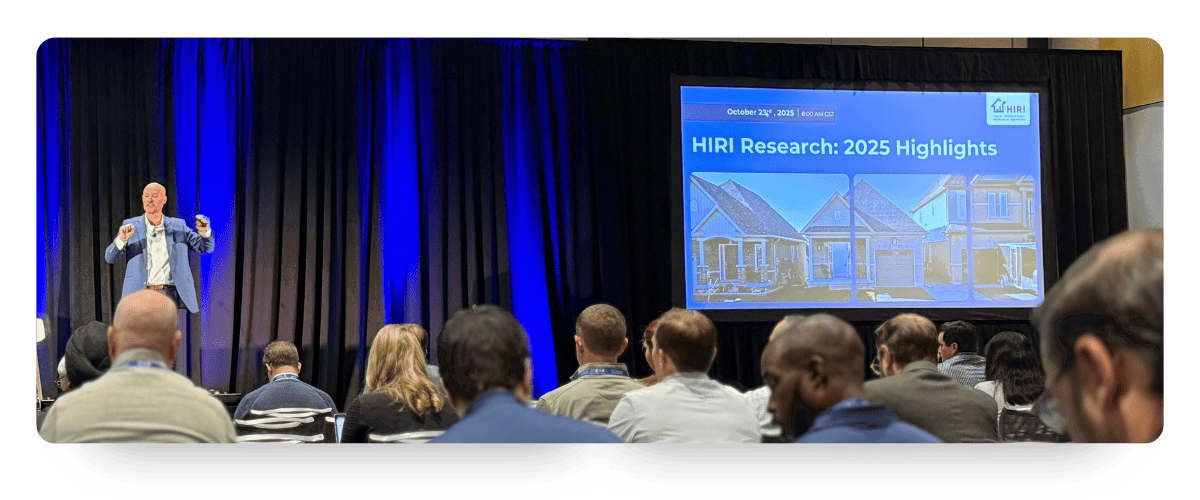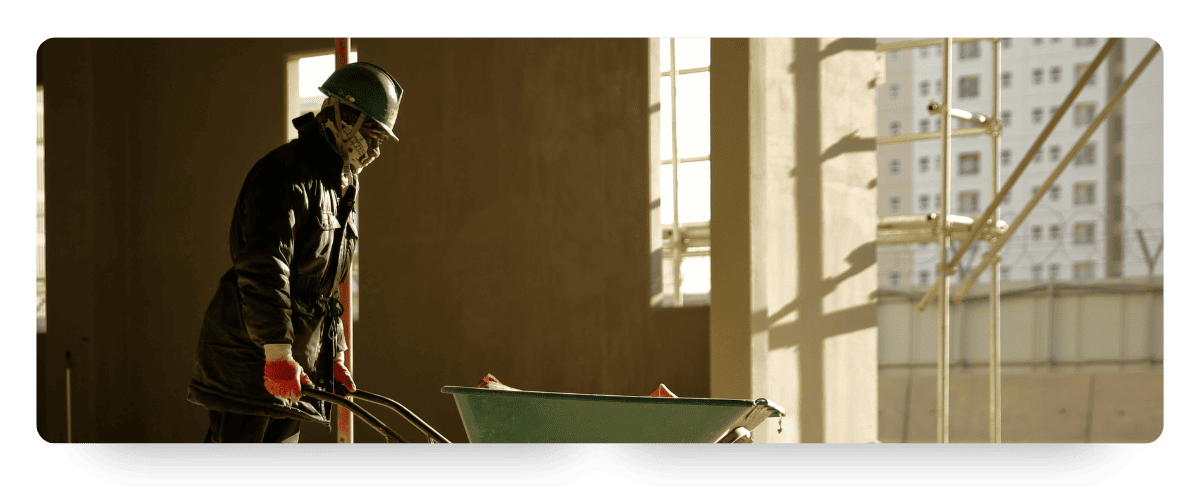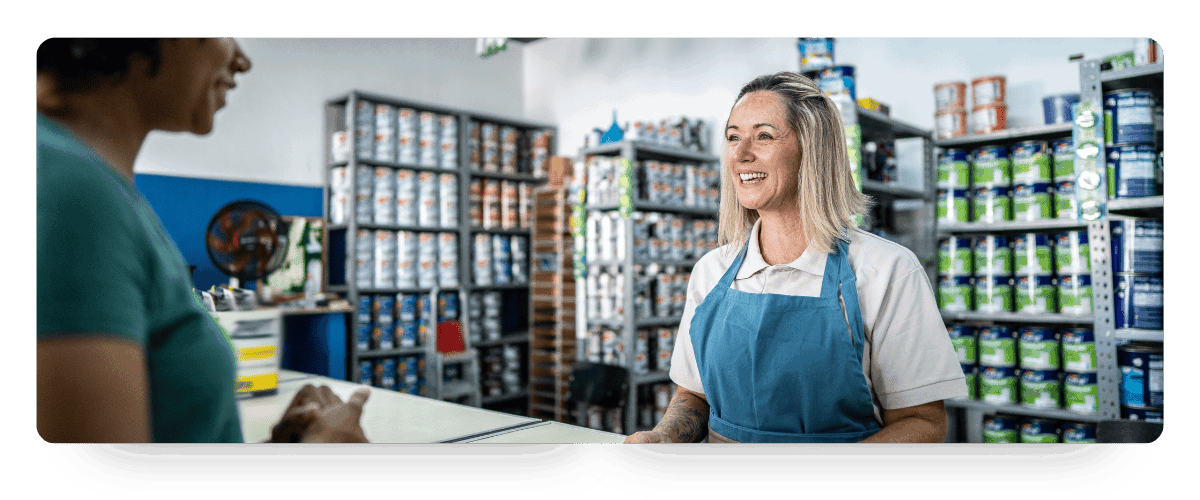What You Missed at the 2025 Home Improvement Insights Summit
Oct 31, 2025
The 2025 Home Improvement Insights Summit brought together leading economists, data experts, and industry strategists to unpack what’s driving today’s housing and remodeling markets and where the next wave of opportunity may emerge — whether that me customers, channels, or market opportunities. From macroeconomic shifts to consumer mindset changes and technology adoption, this year’s conversations underscored one theme: uncertainty is the new constant. As such, companies that choose informed adaptation in the face of uncertainty keep a competitive advantage.

A Macroeconomic Balancing Act Amidst Uncertainty
Kicking off the event, Danushka Nanayakkara of NAHB framed the U.S. economy as one navigating uncertainty at levels comparable to what was experienced during the response to covid-19. Noting that the consensus among economists today is only a 30% risk of recession in 2026, largely based on an AI bubble, and with a labor market cooling from prior highs, she noted the structural shifts redefining housing demand.
Labor Market Has Cooled
Based on data from the Bureau of Labor Statistics, while prime-age labor participation remains healthy, participation among those 55+ is lagging. There are now more unemployed people than there are open jobs, in contrast to what was experienced just a few years back, when there were two to three times more jobs open than people unemployed. This sets the stage for the Fed focusing more on supporting the labor market right now with some basis-point cuts even though inflation is still not at target.
Inflation and Consumer Debt Pressures Have Risen
The CPI has eased to 2.9%, and rents have stabilized, but consumer debt has climbed to the highest level ever seen, with credit card balances up 41% since 2022 and auto loans surging as new vehicle prices average $50,000.
Single Family Housing Affordability Headwinds Persist
Housing affordability challenges persist: the average home now costs over five times the median household income, compared to three times in the 1970s. This has resulted in the lowest homeownership rate since 2019. Yet some optimism remains as inventory levels move closer to normal, at nearly 6 months’ supply, which is good because it will help soften price pressures on buyers looking to enter the market or make a move. Pushes to decrease regulatory costs, which account for 24% ($93,870) of new home continue to be made to try and improve the housing affordability issue and enable more buyers to enter the market. Danushka shared the NAHB’s forecast that single-family starts will dip in 2025 before a modest recovery in 2026, while multi-family housing has seen a rebound in 2025 following a difficult 2024.
“Residential remodeling continues to show positive growth prospects,” she noted; a sign that homeowners are still investing, even if they’re staying put. “Share of spending on home improvement increased from 33% in 2007 to 44% in Q1 2025.”

Pro Workforce Pressures and Policy Perspectives
Ken Simonson of the Associated General Contractors highlighted the tightening construction labor market. Construction job openings specifically are down 38% year-over-year, and are at the lowest point since 2017, reflecting weaker demand. This communicates that contractor firms don’t have enough work lined up right now to advertise jobs. Even still, there is continued optimism for 2026 and firms are holding onto skilled workers for as long as they can, enabling contractor wages to continue to rise 4 – 5% annually.
On policy, Michael Zdinak of S&P Global noted that while “we’re in unusually uncertain times for economic forecasting,” he still expects continued expansion without recession. Tariffs, immigration policy, and wage dynamics remain key headwinds, but retroactive tax cuts and narrowing mortgage spreads could sustain growth in the near term.

Shifting Consumer and Market Dynamics
Todd Tomalak of Zonda shared that while home sales saw little spring lift in 2025, fall traffic has been strong, indicating that consumers are still shopping for housing, they just are not buying yet. The primary reason? Uncertainty.
“We don’t remodel when we’re worried about losing our job,” Todd explained.
That sentiment aligns with a market in flux, where the primary reason why the majority of people say it’s not a good time to buy a house has shifted from “mortgage rates” to “uncertainty.”
Home Improvement Spending Growth Forecasted
Still, the long-term outlook remains constructive. Zonda projects home improvement spending growth in 2026, and even double-digit spending growth in 2027 supported by demographics and aging housing stock. This largely aligns with the U.S. Size of Market forecasts HIRI has been advising our members with.
Considerations for Long-Term Demographics that Will Shape Housing Growth Factors
Todd pointed out a couple of factors to be thinking about as you temper your expectations for the future housing and home improvement demand:First, Todd emphasized that current life expectancy figures built into economists forecast models do not account for improved life expectancies from rapid medical development from AI. Further, Todd shared an example from the 70s about how formative experiences create behavioral implications for decades to come. Since the last five years have been ripe with formative experiences, including the frustrations of first-time buyers in 2020 – 2025, manufacturers and retailers should be aware of how those formative experiences may shape their housing and home improvement spending patterns for decades to come.

The Consumer of Tomorrow
Matt Carmichael of Ipsos pulled the thread further and examined how demographic and cultural shifts are redefining what consumers value. Using the STEEP‑W framework, he outlined two major forces: population declines and changing housing suitability.
Fewer Young Adults Entering the Housing Market Annually
Birth rates continue to decline, creating a “demographic cliff” with 100,000 fewer young adults entering the market each year, considered a cohort effect of the 2008 financial bust playing out, because, as Matt put it, “worry is not a good time to have kids.” Meanwhile, people are living longer, and often living longer than they have saved for, which is already about 12 years longer than when the 401(k) was introduced in 1978. These factors are changing the composition of households and housing needs.
Retrofitting Houses That Were Built for Yesterday’s Families
Much of today’s housing stock, Matt warned, “was built for yesterday’s families.” Technology spending often takes priority when considering what to spend on, including for home upgrades. In Matt’s eyes, the American Dream isn’t disappearing, it’s evolving. For Gen Z, freedom outweighs homeownership by a 3:1 margin. “Enable people’s dreams, enable their trust,” he urged, adding that companies that pause to consider the future and become attuned to these signals grow 200% faster than those that do not.

Housing, Climate, and Risk Mitigation Behaviors
Kara Ng of Zillow brought the conversation to climate resilience, calling it “no longer a social issue; it’s a housing force.” With 80% of home shoppers considering climate risk factors, affordability and insurability are both key during decision-making.
38% Increase In Home Insurance Costs since 2019
Home insurance premiums have risen 38% since 2019, while incomes grew just 22%, making coverage a deciding factor in where people buy, move, and stay. Homes in flood- or fire-prone areas sell at deeper discounts.
Homeowners Investing Nearly $1,000 Annually in Resilience-Based Home Improvement Projects
Further, homeowners are investing in resilience-based projects, averaging $952 annually and $10,000+ in one-time projects to safeguard their existing homes. This creates a clear opportunity for product manufacturers in both product development and regional positioning efforts: demand is shifting toward resilience, efficiency, and personalization, features that align longevity with tangible homeowner value.
AI and the Future of Home Improvement
Michael Anschel offered a provocative view of where AI is taking the world, including the home improvement industry, describing the rise of autonomous “agent networks” that will soon transact, negotiate, and monitor on behalf of users. These systems, already being developed by Microsoft and Google, could reshape everything from procurement to marketing optimization. These agent-to-agent (A2A) systems will exist alongside agent-to-business (A2B) and agent-to-consumer (A2C) systems as well.
Provide Human Support At Points of Frustration in the Customer Experience
Yet even amid this automation, Michael reminded attendees that human interaction remains essential, especially at points of frustration for your customer; these are the moments when digital convenience must give way to human support. His message resonated with the Summit’s broader theme: technology amplifies, but doesn’t replace, human connection.

Navigating Growth and Market Balance
Dave King, executive director of HIRI, offered a grounded look at where the home improvement market stands amid ongoing uncertainty.
Home Improvement Industry Forecasts Are Up-and-to-the-Right
2025 has been a slow growth year, but the good news is that it is the lowest within a ten-year forecast horizon. Dave emphasized this year has been a recalibration, not a downturn, and that the home improvement industry continues to be poised for growth. Growth among Pros continues to lead through 2025, while DIY and emergency repair segments will sustain consumer-side strength in 2026 and beyond as inflation and labor pressures persist and cause more homeowners to choose to DIY.
What Really Drives Spend
Dave highlighted the analysis he conducted showing that inflation-adjusted disposable income is the most reliable predictor of home improvement activity, not consumer confidence. Where there’s value in looking at consumer confidence is to assess the change in consumer sentiment, which matters more to forecast home improvement activity than the absolute level. Dave noted that across building product categories, nuances do matter: spending patterns vary by product type and channel, which can be better understood by reviewing HIRI’s U.S. Size of Market report.
Where You Can Win in 2026 and Beyond
Despite tighter competition, over half of contractors expect revenue growth, enabling companies with strong Pro share to continue to grow with them. Even still, 52% of Pros continue researching products they already buy, signaling the value of ongoing education and support, and challenging the long-held industry assumption that Pros are inherently more brand loyal than other customers.
Where to Win Among Pros
Based on HIRI research, to continue winning with Pros, your products need to be easy to research, easy to buy, and easy to install. And when questions or issues do arise, three in five prefer in-person resources, with the ability to reach a person by telephone continuing to be critical because Pros want to be able to contact a person quickly and whenever they need.
Where to Win Among Homeowners
To win among homeowners, who expect both in-store and online purchase options to be available to them, will take further distribution and logistics efforts from manufacturers and retailers. Based on HIRI research, homeowners understand paying more shipping costs for larger items while most expect free returns regardless of the size or volume of the product. For product categories where incentives can drive demand, consider that fewer than one in four know about available incentives, leaving clear room for better communication and engagement to increase project activity and grow your market share.

Addressing Multi-Channel Go-To-Market Challenges
Panels led by Amanda Williams of Wray Ward and Jennifer Castenson of Buildxact emphasized the increasing complexity of reaching both Pro and DIY audiences. Manufacturers cited retention and loyalty as top challenges among Pros, while DIY success hinges on affordability and ease of installation. Data integration and predictive analytics were named as critical capabilities, with retail panelists calling for standardized UPCs, data partnerships, and integrated demand platforms to enable more agile decision-making. As one panelist noted, “You can’t serve Pros or DIYers well if you don’t know what they really need — and that starts with better data.”
Moving Forward
In a year defined by economic, demographic, and technological transitions, the presentations at the 2025 Home Improvement Insights Summit reinforced the importance of insight-led agility for home improvement product manufacturers, retailers, and other industry stakeholders. Given that the home improvement industry’s growth may continue to contend with economic uncertainty, how well we all respond to the changing signals will be what matters most.
HIRI members have exclusive access to ~$1M of annual research, which covers Channel, Product, Project, and Market Size activity for both Homeowners/DIYers and Contractors. HIRI is the best source of secondary home improvement information. To leverage HIRI data ensures your organization has a strong, foundational comprehension of the industry and dynamics impacting it.

